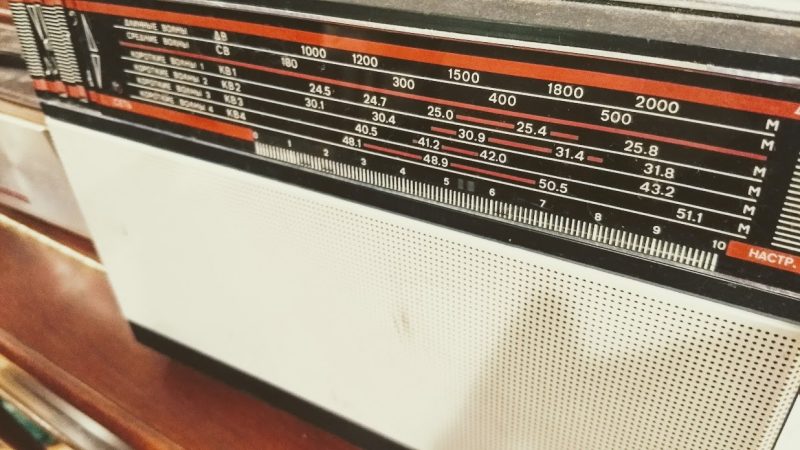Radio Waves: Stories Making Waves in the World of Radio
Because I keep my ear to the waves, as well as receive many tips from others who do the same, I find myself privy to radio-related stories that might interest SWLing Post readers. To that end: Welcome to the SWLing Post’s Radio Waves, a collection of links to interesting stories making waves in the world of radio. Enjoy!
Owning a shortwave radio is once again a subversive activity (Hackaday)
An abiding memory for a teen fascinated by electronics and radio in the 1970s and 1980s is the proliferation of propaganda stations that covered the shortwave spectrum. Some of them were slightly surreal such as Albania’s Radio Tirana which would proudly inform 1980s Western Europe that every village in the country now possessed a telephone, but most stations were the more mainstream ideological gladiating of Voice of America and Radio Moscow.
It’s a long-gone era as the Cold War is a distant memory and citizens East and West get their info from the Internet, but perhaps there’s an echo of those times following the invasion of the Ukraine. With most external news agencies thrown out of Russia and their websites blocked, international broadcasters are launching new shortwave services to get the news through. Owning a shortwave radio in Russia may once again be a subversive activity. Let’s build one! [Continue reading…]
Radio’s Hardware Problem Grows (Radio Ink)
(By Ed Ryan) When was the last time your station gave away a slick looking radio as a promotion (batteries included)? How many more echo dots will radio stations keep giving away before they realize they may be pushing listeners to find something else to listen to?
In a teaser for Edison Research’s upcoming Infinite Dial presentation at Podcast Movement’s Evolutions next week, the research firm reported that the number of Americans who say they do not have a single radio in their home continues to rise.
In the 2020 Infinite Dial, performed before the onset of the COVID-19 pandemic, just under one-in-three Americans age 12 and older reported not having a single radio in their home, according to Edison. In 2022, that number is now 39%.
Fourteen years ago, only 4% of respondents said they had no radios at home.
Living in a smart-phone, Tik Tok world, it’s no surprise that the younger Edison dips into the numbers the worse the problem gets for radio. “57% of respondents age 12 to 34 reported having no radios at home.”
Of course you want your station to be available on Amazon’s Alexa and other smart devices but do you have to encourage listeners to move away from the radio to listen to your station as well. You’re kidding yourself if you believe listeners go on Amazon to buy a device so they can listen to their favorite local radio station. Just ask your own kids.
Giving listeners a handsome looking, battery operated radio, that works just fine when the power goes out, and includes your logo all over it seems like a no-brainer. [Continue reading…]
Working at Radio Berlin International 1988-90 with Steve Winkler (13) (Radio GDR)
[Note: From Nov 20, 2019] On Episode 13 of the Radio GDR Podcast, the world’s only English language podcast about East Germany, host Shane Whaley interviews Steve Winkler who worked at East Germany’s Radio Berlin International as a Line Producer/Studio Manager.
Click here to listen to this podcast at Radio GDR.
Russian Comms in Ukraine: A World of Hertz (RUSI)
Evidence of Russian communications in Ukraine indicates that the modernisation of the Russian Armed Forces has been troubled, causing operational and tactical challenges.
Russia’s war in Ukraine has been marked by its apparent lack of coordination and an ostensibly flawed plan. Russian forces have been observed moving deep into Ukraine, only to be cut off by a lack of fuel, vehicle breakdowns, and ultimately Ukrainian forces. Open-source intelligence and Ukrainian reports suggest that radio communications across the Russian forces are poor, leading to makeshift solutions including the use of unencrypted high frequency (HF) radio for long-range communications and mobile phones to communicate. There is some evidence that Russian soldiers have deployed with more advanced software-defined radios (SDR) such as the R-187P1 Azart and R-168-5UN-2 tactical radios that were carried by a Russian airborne soldier captured near Kyiv. However, the impression provided by the Russian Ministry of Defence (MoD) over the years has been that this equipment was widespread and that the majority of the Russian Armed Forces (RuAF) were operating digital radios and systems designed to facilitate planning and decision-making.
The R-187P1 Azart is a sixth-generation digital tactical SDR with built-in encryption designed to provide Russian troops with secure and jam-resistant communications. It operates in the very high frequency (VHF)/ultra high frequency (UHF) bands, has a range of 18 km in ground communications depending on configuration, can be used as a repeater station and can utilise GLONASS or GPS to provide positioning. The radios appear to have been delivered for the first time in 2017 to the 90th Guards Tank Division and were provided to other units thereafter, with claims of 300 radios delivered to a unit in the Leningrad region. The R-187P1 serves alongside the R-168 Akveduk family of fifth-generation tactical digital radios, which is also designed to provide uninterrupted communications in an electromagnetically challenging environment. The family has many variants, including HF and VHF systems designed to provide communications up to 350 km and 20 km respectively while mounted in a command vehicle. The radios were introduced by 2000, and deliveries were reported through to 2016 and beyond. [Continue reading…]
Do you enjoy the SWLing Post?
Please consider supporting us via Patreon or our Coffee Fund!
Your support makes articles like this one possible. Thank you!


